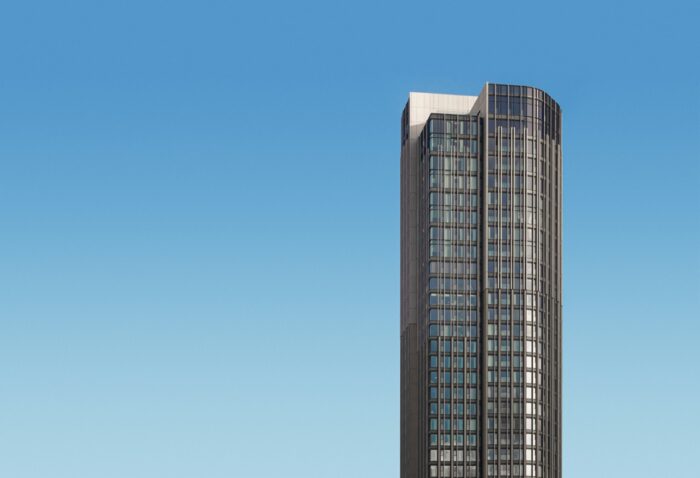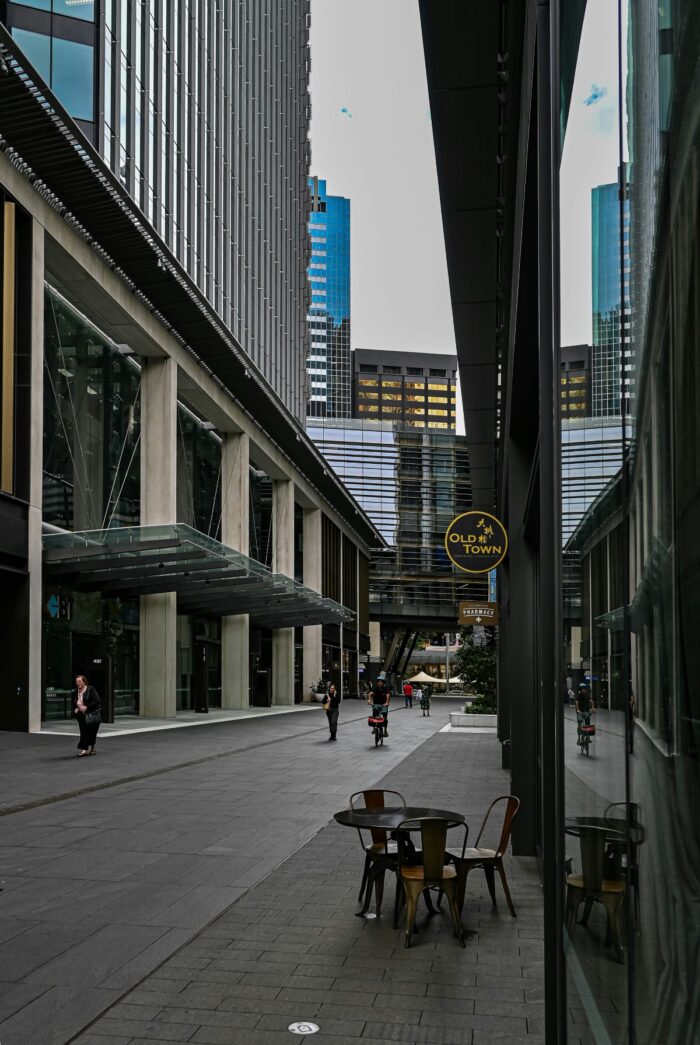Recognising the risks of investing in commercial property in Australia
Published
June 12, 2024
Published
June 12, 2024

As investors, we’re all about safety and security. But there can be a time to face challenges, to understand them, in order to overcome and create a position far superior than ever before. Commercial real estate can be exactly like that.
Investing in commercial property can yield excellent returns, offering stable income, superb capital growth and of course portfolio diversification. But the asset class is not without its risks (and, by nature, mitigations of those risks). As long-time commercial property professionals, we’ve created this guide to expose the primary risks associated with commercial property investment and offer strategies to mitigate them.
We’ve broken these risks into the below categories:
- Market volatility and economic factors
- Tenant-related risks
- Location and market dynamics
- Financial and legal risks
- Operational and management risks
- Environmental and external risks
Let’s get started.
The risks of investing in commercial real estate (and how to mitigate them)
1. Market volatility and economic factors

Economic downturns
A range of economic conditions can influence your commercial property’s performance. Factors such as recessions, inflation and changes in consumer confidence can dictate the demand for commercial space. Your tenant relies on a solid economy to enhance their business activity, and in turn, you rely on a solid tenant to enhance your investment. It all starts with a robust economy.
Mitigation: You might diversify your property portfolio across different sectors and locations to spread risk. Many investors will consider properties with strong long-term tenants or those in essential services that are less impacted by economic swings.
Interest rate fluctuations
As any homeowner will tell you, high interest rates add to your borrowing costs—and, consequently, investment returns. Rising interest rates can increase commercial loan repayments, eating into cash flow and profits. Thankfully, commercial real estate is known for strong yields, which typically offset high interest rates. But it’s important to be aware that interest rates do increase and can impact the bottom line of your investment.
Fixed rate loans can stabilise repayment amounts in high interest rate environments. Crucial is to regularly review your loan terms and consider refinancing during low interest periods. And finally, ensuring the highest yield possible from your investment will safeguard your returns from rising interest rates.
Regulatory changes
Changes in government regulations—such as zoning, tax policies and environmental regulations—can impact property values and commercial development potential. These can often be a positive for investors, with changes leaning in a favourable direction. But it’s important to be aware of the downsides they sometimes cause.
Mitigation: Stay informed about local and federal regulations, and thoroughly research proposed changes in your property’s locale (preferably before you invest in it). Of course, it’s wise to consult with property, legal and planning professionals who can provide specific advice on compliance and strategic planning.

2. Tenant risks
Tenant default
The risk of tenants failing to meet their lease obligations can be a significant concern for commercial property investors—specifically those who do not vet their tenants properly or ensure their property is occupied by the most appropriate tenant.
Mitigation: Conduct thorough due diligence on prospective tenants, including credit checks and business evaluations. Consider lease agreements with personal guarantees or security deposits to protect against default.
Lease expiry and vacancy
Lease expiries can be a risk if the property remains vacant for an extended period, which means a loss in rental income and increased costs for leasing campaigns and potential improvements to the property to entice new occupants.
Mitigation: Having a proactive lease renewal strategy in hand—including regular communication with tenants—can ensure an occupied property for the long-term.
There are a range of other solutions for landlords to keep rental income coming through the door, such as diversifying your tenant mix to reduce reliance on a single tenant, and it’s often experience that leads to the successful implementation of these strategies. Contact us to leverage from our expertise via one of our unlisted property trusts.
3. Location and market dynamics
Location-specific risks
The desirability and relevance of a property’s location play a crucial role in its performance. Things like local infrastructure developments, precinct growth potential and demographic changes can impact property value (for the positive as well).
Mitigation: By investing in areas with strong growth prospects and a high amount of relevance, investors can safeguard their investment. For us, we’ll conduct an extremely thorough due diligence investigation prior to acquiring a property and will even hire a renowned national demographer to report to us on the location’s future growth potential. In commercial property investment, success starts before you even purchase the property.
Supply and demand imbalance
Oversupply of commercial space can lead to higher vacancy rates and downward pressure on rental prices, affecting the commercial property’s return on investment. With too many options for tenants, landlords may find it difficult to secure occupants at favourable rates and may have longer vacancy periods.
Mitigation: You can monitor local market conditions and trends to ensure you’re ahead of the supply-demand curve, keeping your property relevant while many other potentials pop up on your tenant’s radar.
Also, avoiding over-saturated markets and considering properties with unique attributes or in niche sectors where demand outstrips supply will help ensure you have a compelling offering for existing and/or future tenants.
4. Financial risks

Financing and debt risk
Leveraging debt to finance property purchases is the norm for real estate investors. But changes in loan terms or the inability to meet repayments can have severe financial consequences. It goes without saying, investors must always ensure sound financial modelling from the beginning to ensure they’ve catered to changes in their or their property’s circumstances.
Mitigation: Maintaining a conservative loan-to-value ratio (LVR) and having a solid repayment strategy is the obvious solution to avoiding any financial risks. Just as vital is ensuring an adequate reserve fund, so that future outgoings (including increased repayments) can be met when the need arises.
5. Operational and management risks

Property management challenges
Effective property management is crucial for maintaining the property’s value and ensuring tenant satisfaction. Without it, commercial property owners run the risk of seeing a decline in their property’s market relevance, leading to less enquiries from future tenants—and less desire to stick around from existing ones.
Mitigation: Consider hiring professional property management services if you lack the expertise or time to manage the property yourself, and regularly review management performance and address any issues promptly.
At Properties & Pathways, we manage a considerable number of our properties in-house, thanks to our asset management team. It ensures we’re across every aspect of each asset, from repayment dates to tenant concerns to maintenance items.
Maintenance and repairs
Commercial properties require ongoing maintenance and periodic upgrades to stay attractive to tenants and functional for tenant interaction. Unexpected repair costs can impact cash flow and profitability, and if these items are not repaired quickly, they can aggravate tenants and deter lease renewals. (All of this can of course be avoided.)
Mitigation: Building a reserve fund that caters to the inevitable repairs and maintenance items on your property. Also conduct regular property inspections to ensure the property is in order, and implement a proactive maintenance schedule to address issues before they get worse.
6. Environmental and external risks
Environmental compliance
Commercial properties must comply with environmental regulations, including waste management, energy efficiency and pollution control. Non-compliance can lead to remediation costs (and even fines).
Mitigation: Stay informed about environmental regulations and ensure your property complies with all relevant laws. Your thorough due diligence investigation should bring to light any and all environmental concerns. And for office property landlords, the best start to your acquisition journey is by looking at the building’s NABERs rating.
At the end of the day…
Investing in commercial property can mean excellent returns and a steady path to a prosperous retirement. But this wealth-building avenue also comes with a variety of risks.
By simply understanding and proactively managing these risks, investors can enhance their chances of success and safeguard their investments.
Key takeaways:
- Diversify your portfolio across different sectors and locations to spread risk.
- Stay informed about economic trends, regulatory changes and market dynamics.
- Conduct thorough due diligence on tenants and locations to mitigate tenant-related and location-specific risks.
- Implement strong financial controls and maintain a healthy reserve fund.
- Prepare for external risks by investing in comprehensive insurance and disaster preparedness.
- Engage professionals for property management, legal advice and environmental assessments.
We’ve been in the game for years and can honestly say that staring risks and challenges in the eye—instead of avoiding them or being immediately deterred by them—has led us and our investors to very favourable outcomes. Like this industrial property investment, which doubled our investors’ return in under two years.
For experienced investors, understanding the risks associated with certain investments, which deter new investors from buying, can thin your competition and provide the opportunity for serious capital growth. But it’s all about that one idea: understanding the risks and knowing how to mitigate them.
Invest alongside the professionals

If you’re new to the market or considering going at it alone, commercial real estate can be far from a simple investment. That’s why so many Australians consider investing in a professionally managed unlisted property trust.
Hundreds of investors leverage our expertise and hands-on management to create substantial wealth. Want to know how you can come on the journey with us? Get in touch today about our upcoming commercial property investment opportunities. By sharing the journey in property investment, you also share the rewards.







